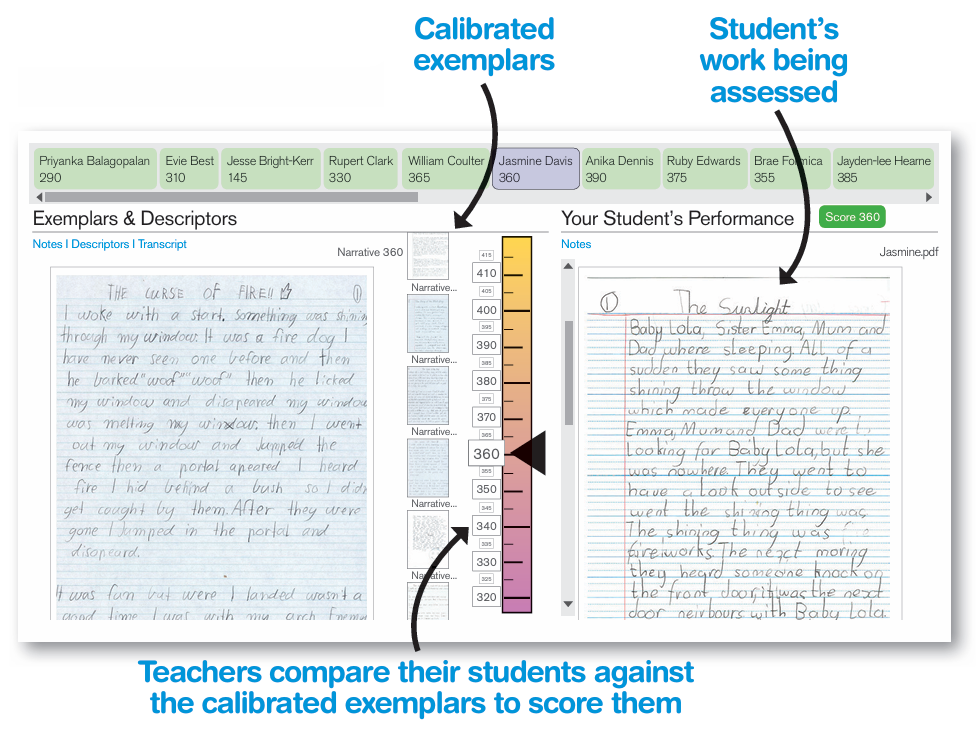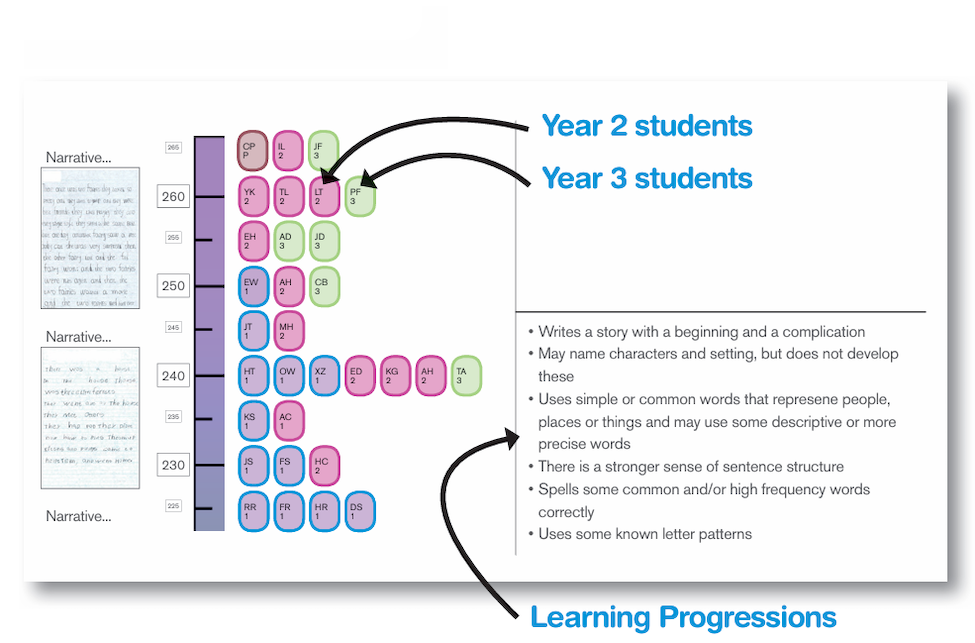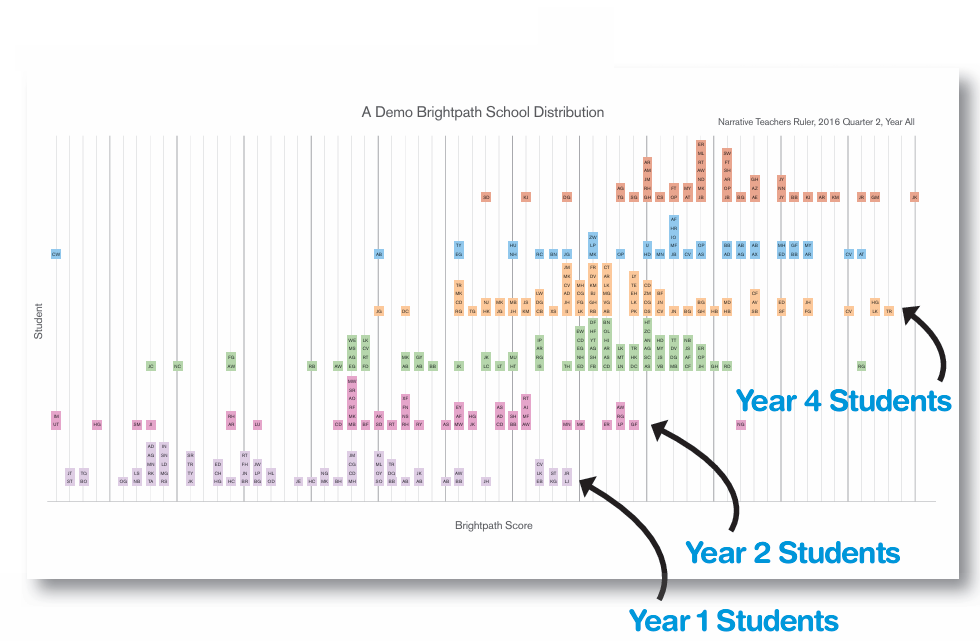How Brightpath’s Formative Writing Assessments Strengthen Teacher Judgment
Introduction:
For decades, standardised testing has dominated educational discourse, often overshadowing the invaluable role of teacher judgment in assessing student progress.
This overreliance on standardised measures has raised concerns about a narrowed curriculum and a disconnect between tested skills and holistic student development.
Empowering teachers with effective formative assessments is key to overcoming these limitations.
Brightpath Writing, our formative assessment tool developed through extensive research at the University of Western Australia, provides a data-driven framework that leverages the expertise of educators.
Here, we’ll delve into the innovative features of Brightpath and explore how it strengthens teacher judgment.
The importance of formative assessments
In 2002, educational researcher Richard Stiggins emphasised the critical role of formative assessments in maximising student achievement.
He argued that both ‘assessment of learning’ (summative assessments) and ‘assessment for learning’ (formative assessments) were essential for a well-rounded approach.
The call for better assessment echoed internationally.
Just as the ink dried on the 2008 Melbourne Declaration, where Australian Education Ministers committed to rigorous and comprehensive assessment, NAPLAN was launched.
This national testing program became part of the assessment landscape.
However, while standardised tests provide a snapshot of learning outcomes, formative assessments and the use of teacher judgements conducted frequently within the classroom, are often undervalued.
Putting teacher judgment back at the centre of assessment
Nearly a decade ago, a groundbreaking initiative in Western Australia (WA) aimed to reinstate the importance of teacher professional judgment in assessment.
This initiative, led by a collaboration between the University of Western Australia (UWA) and the WA Primary Principals’ Association (WAPPA), with the support of the WA Independent Primary School Heads of Australia (IPSHA), has had a lasting impact.
Today, the program is overseen by the School Curriculum and Standards Authority (SCSA), fostering collaboration across all education sectors in WA.
Notably, the South Australian Department of Education also supports hundreds of schools in using this approach, demonstrating its expanding reach beyond WA.
The birth of Brightpath
The development of Brightpath Writing, our formative assessment tool for schools, was fueled by extensive research, which began with a study examining data anomalies in the writing component of the WA Literacy and Numeracy assessment program.
This work informed the state’s decision to move away from Student Outcome Statements and even led to the development of a marking guide that later became the template for the NAPLAN writing marking guide.
Building on this success, the second and more pivotal, research area focused on the consistency of teacher judgments.
This groundbreaking research, involving over 100 studies across various age groups, revealed that teachers consistently make highly reliable judgments of student work, achieving agreement levels of 0.95 (where 1 indicates perfect agreement) when they are asked to compare pairs of performances.
Building on this research, Brightpath was developed with the help of WAPPA as a two-stage assessment process.
Brightpath: A data-driven framework for teacher assessment
To ensure a reliable and data-driven framework for student progress, Brightpath uses a unique approach for calibrating its assessment scales.
Let’s delve into the key steps involved:
Calibrating assessment scales:
-
Authentic tasks: The process begins with the development of assessment tasks that elicit information about the developmental aspects of student performance and a large sample of student work is collected.
-
Teacher collaboration: A small team of dedicated teachers compare pairs of student performances each time selecting which is the better. This is supported by over 100 studies This is supported by over 100 studies across various age groups, which have shown high teacher agreement (0.95 on a scale where 1 indicates perfect agreement) in judging the relative differences of student work.
-
Data-driven learning progressions: The calibrated student work forms the foundation for developing learning progressions, similar to previous efforts like the First Steps Continua. However, Brightpath uses a key difference: empirical data from teacher judgments allows for calibration of a much larger sample of student work. This calibrated work not only informs the creation of learning progression descriptors but is also trusted by ACARA for establishing the National Literacy Learning Progressions that support the curriculum.
-
Exemplar selection: A subset of student work samples is chosen to represent different points along the calibrated scale. These exemplars serve as reference points for teachers when assessing their own students’ work in the classroom.
Figure 1: How teachers assess: Narrative Teachers Ruler

Brightpath’s well-designed exemplars empower teachers through:
-
Familiar activities: Teachers use their existing classroom tasks and assessments to gather evidence of student learning.
-
Calibrated reference points: Teachers compare their students’ work to the pre-calibrated exemplars. This allows them to determine the most appropriate placement for each student on the learning progression scale.
-
Streamlined processes: Brightpath not only saves teachers time by capturing their judgments and generating reports, but also creates a centralised repository of data for tracking student progress over time.
Figure 2: Performance Profile Report

The teacher-centred future of formative assessment
With nearly a thousand schools already using Brightpath and plans for broader integration, the focus is shifting towards evaluating the impact of the assessment process on teaching effectiveness.
For the first time, teacher judgments, informed by empirical data, can be used to evaluate student growth in a similar way to NAPLAN data.
Additionally, teachers are provided with standardised grades derived from student performance data.
By prioritising ongoing research to continuously improve assessment practices, Brightpath represents a paradigm shift in assessment, placing trust and value back in the hands of educators, ultimately benefiting students and the entire education system.
Figure 3: Distribution of all students in the school

Ready to learn more? Visit our website see how Brightpath Writing’s formative assessments can empower your teachers today.